
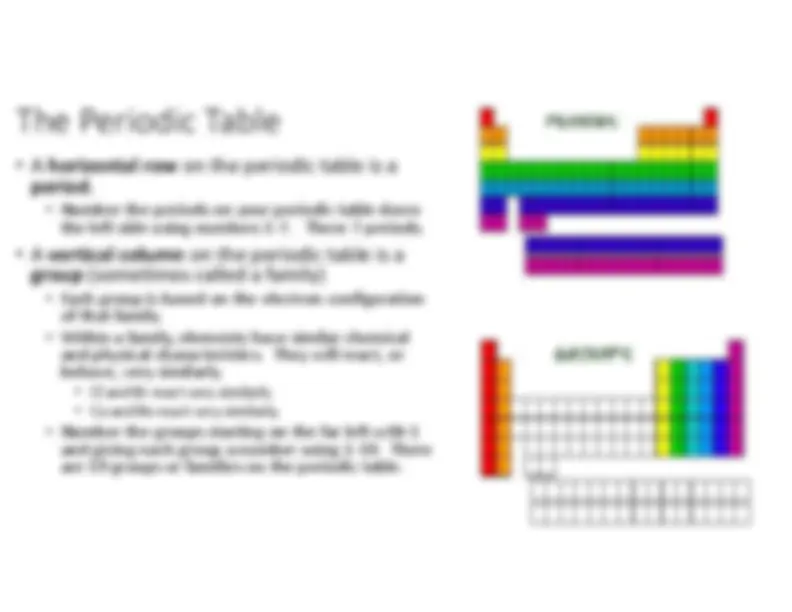
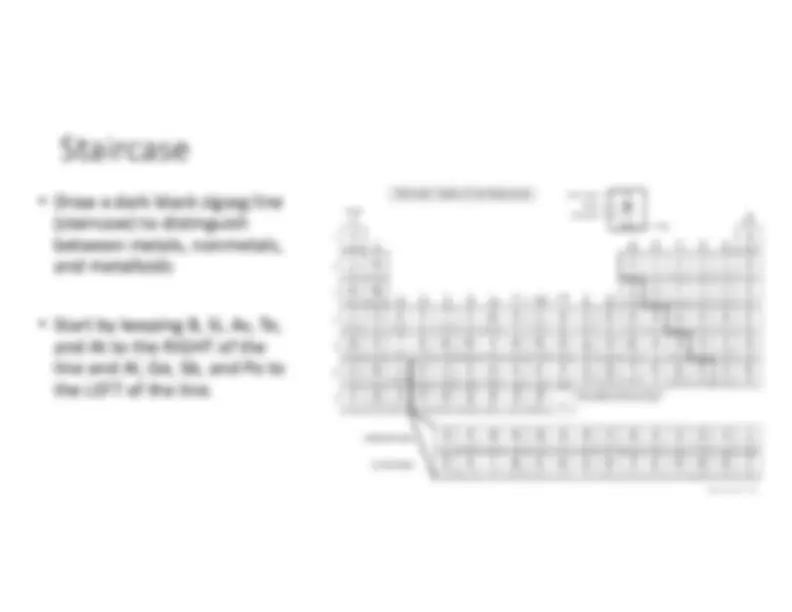
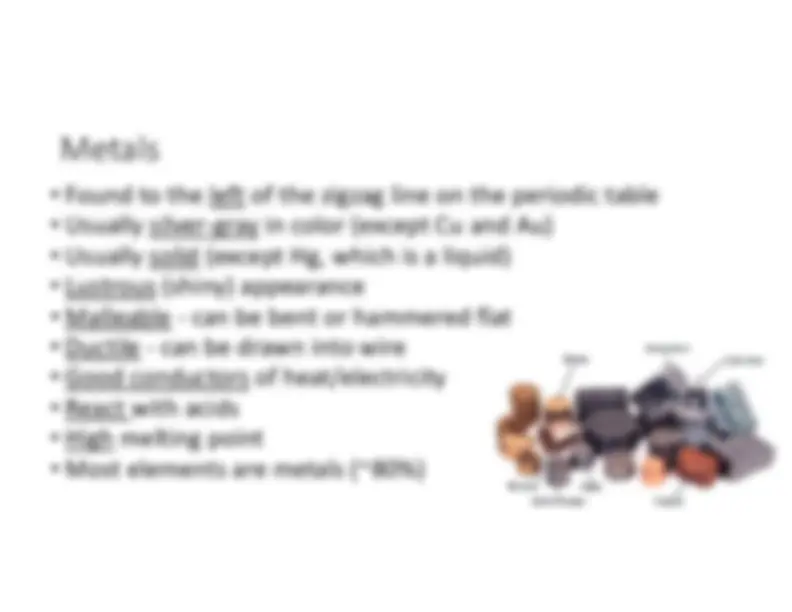
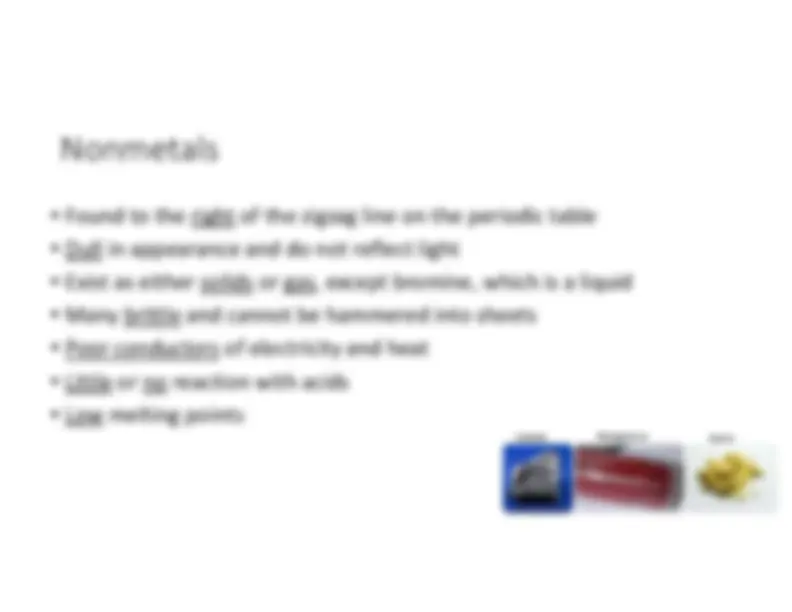
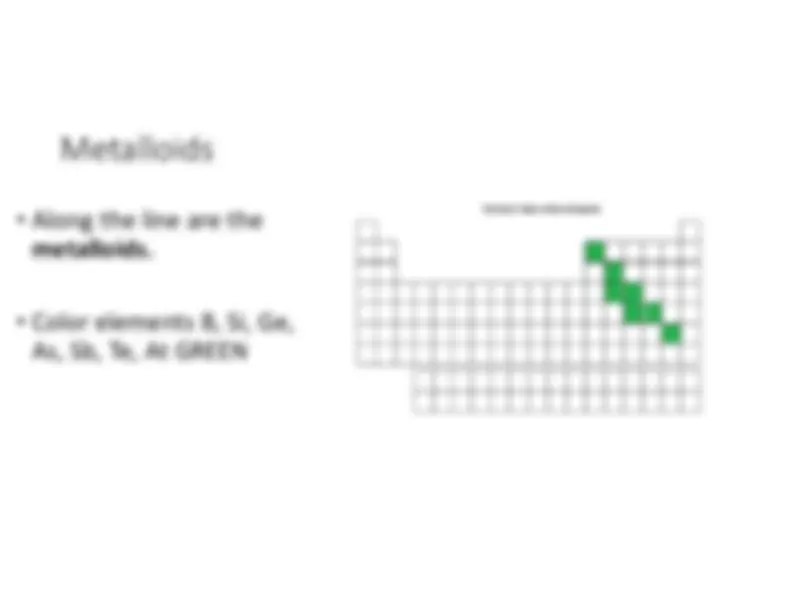
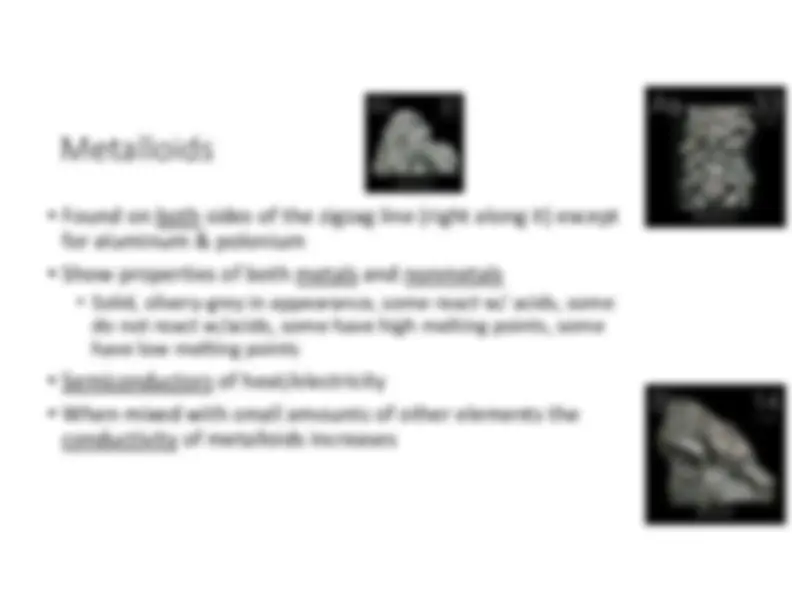
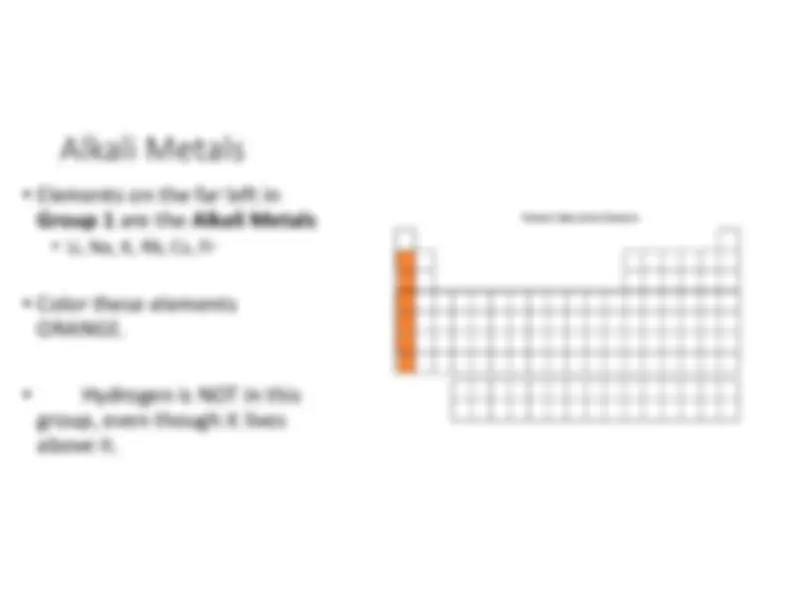
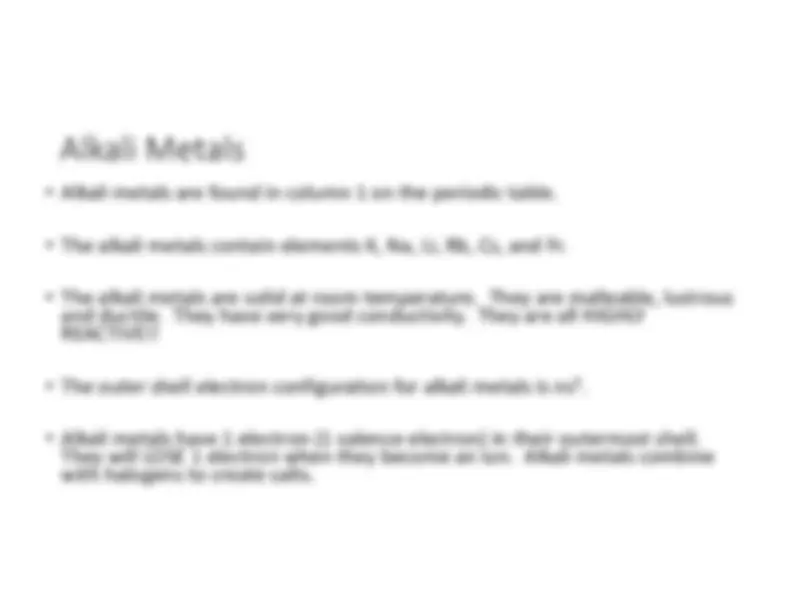
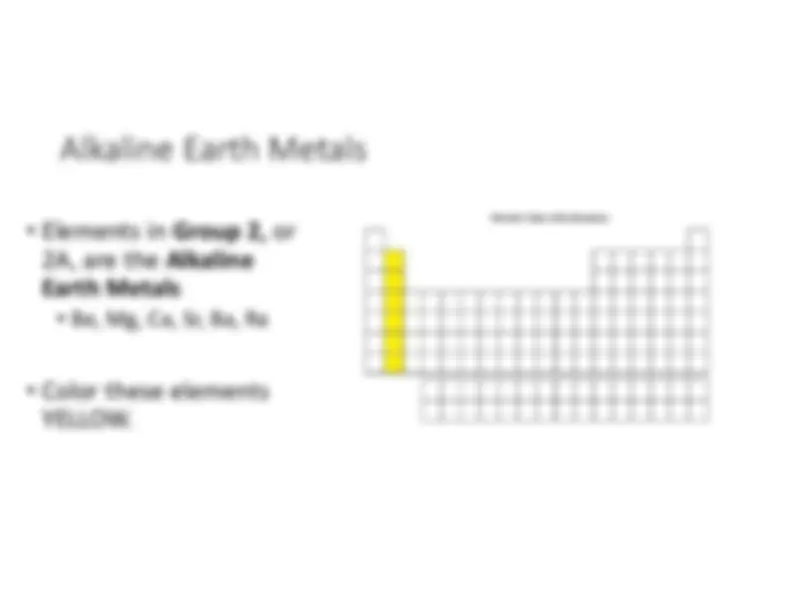
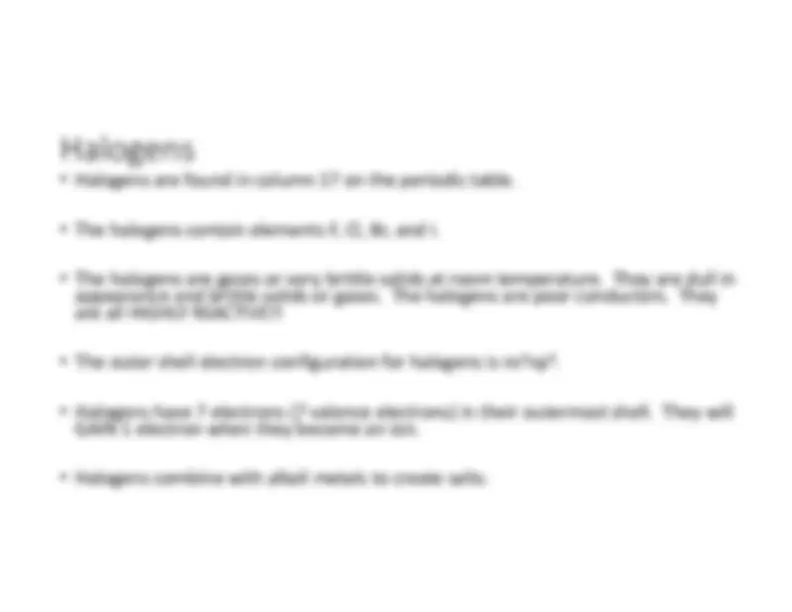
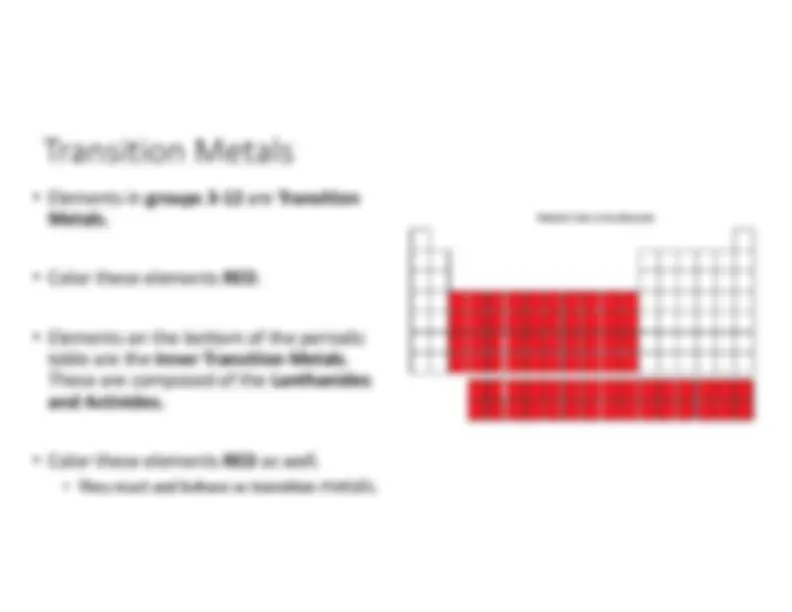
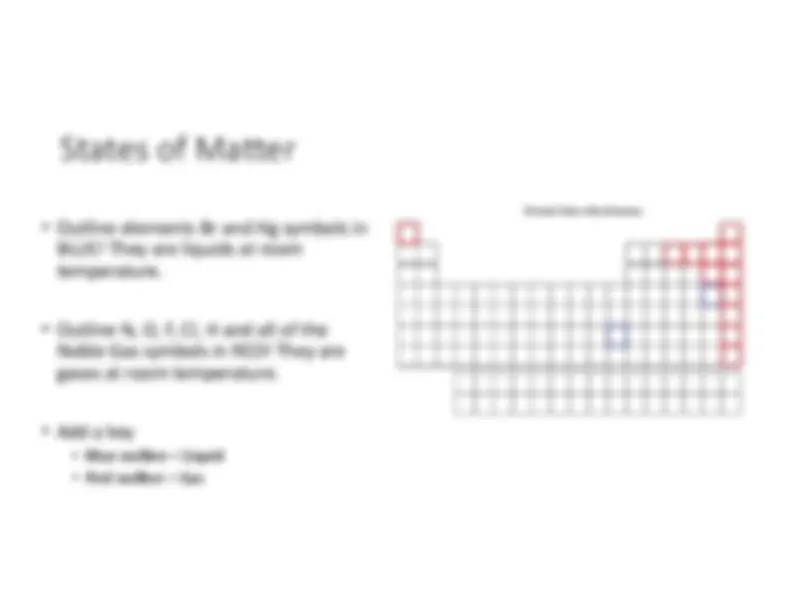
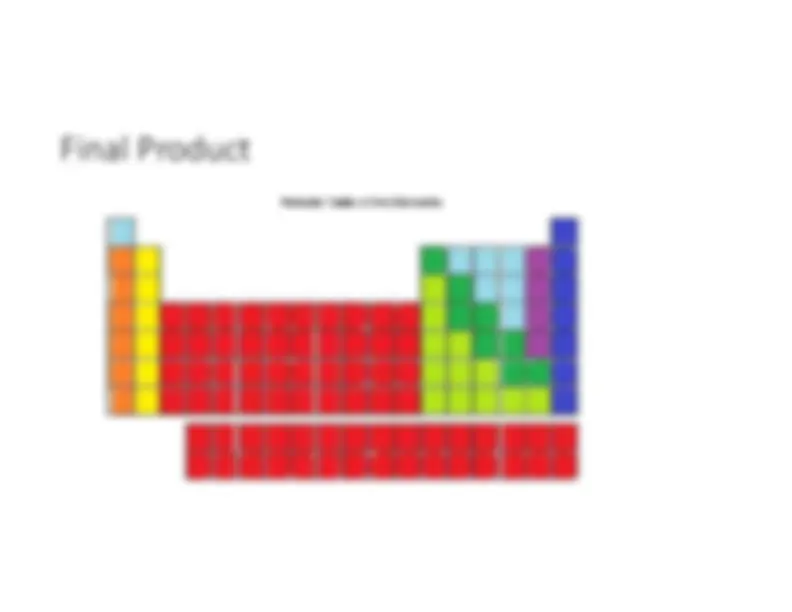


Study with the several resources on Docsity

Earn points by helping other students or get them with a premium plan


Prepare for your exams
Study with the several resources on Docsity

Earn points to download
Earn points by helping other students or get them with a premium plan
Community
Ask the community for help and clear up your study doubts
Discover the best universities in your country according to Docsity users
Free resources
Download our free guides on studying techniques, anxiety management strategies, and thesis advice from Docsity tutors
Instructions on how to use colored pencils to identify different elements on the periodic table based on their location and properties. It explains the concept of periods and groups, and distinguishes metals, nonmetals, and metalloids. It also highlights specific groups, such as alkali metals, alkaline earth metals, halogens, and noble gases, and their unique characteristics.
What you will learn
Typology: Lecture notes
1 / 21

This page cannot be seen from the preview
Don't miss anything!













